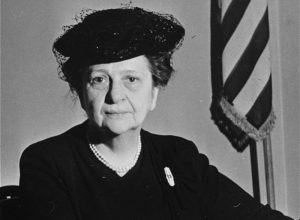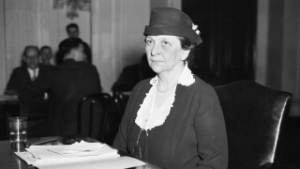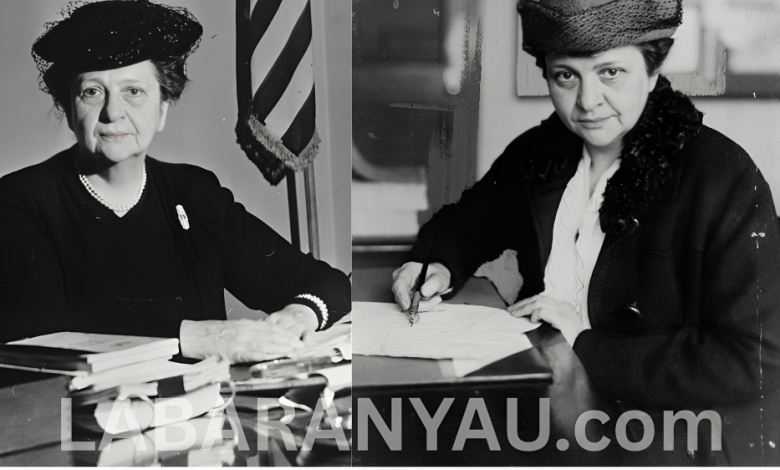
Frances Perkins Biography
Frances Perkins (April 10, 1880 – May 14, 1965, aged 85) was a pioneering American social reformer and the first woman appointed to the U.S. Cabinet.
After graduating from Mount Holyoke College in 1902 and earning a master’s degree from Columbia University in 1910, she became a strong advocate for labor rights following the Triangle Shirtwaist Factory fire in 1911.
She served as New York State’s Industrial Commissioner from 1929 to 1933 under Governor Franklin D. Roosevelt, who later appointed her as U.S. Secretary of Labor on March 4, 1933.
Perkins held the post until June 30, 1945, making her the longest-serving Secretary of Labor, and played a key role in implementing the Social Security Act of 1935, enforcing minimum wage laws, banning child labor, and supporting major New Deal programs.
After Roosevelt’s death, she was appointed to the U.S. Civil Service Commission in 1945 and later taught at Cornell University.
A devout Episcopalian, she authored The Roosevelt I Knew in 1946, offering personal insights into the New Deal era.
She died in New York City, leaving behind a legacy as the “mother of Social Security” and a trailblazer for women in American government.
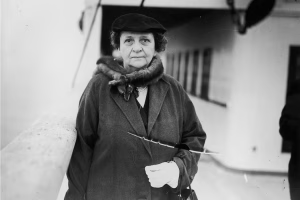
Frances Perkins Wikipedia
| Field | Details |
|---|---|
| Full Name | Frances Coralie Perkins |
| Date of Birth | April 10, 1880 |
| Place of Birth | Boston, Massachusetts, USA |
| Date of Death | May 14, 1965 |
| Age at Death | 85 years old |
| Nationality | American |
| Religion | Episcopalian |
| Profession(s) | Social worker, Sociologist, Politician, Reformer |
| Known For | First woman in U.S. Cabinet; Architect of Social Security |
| Education | Mount Holyoke College (1902); Columbia University (1910) |
| Spouse | Paul Caldwell Wilson (m. 1913) |
| Children | One daughter – Susanna Wilson |
| Political Party | Democratic |
| Key Office Held | U.S. Secretary of Labor (1933–1945) |
| Appointed By | President Franklin D. Roosevelt |
| Major Legislation | Social Security Act (1935), Fair Labor Standards Act (1938) |
| Successor | Lewis B. Schwellenbach |
| Famous Book | The Roosevelt I Knew (1946) |
| Signature Style | Wore a tricorn hat |
| Legacy Building | Frances Perkins Building (U.S. Department of Labor HQ) |
| Burial Place | Newcastle, Maine, USA |
| Hall of Fame | Inducted into the National Women’s Hall of Fame (1982) |

Frances Perkins’ Early Life and Education
Frances Perkins was born on April 10, 1880, in Boston, Massachusetts, and raised in Worcester, Massachusetts, in a middle-class, devoutly religious family.
Her father, Frederick W. Perkins, owned a stationery business and strongly valued education, instilling in Frances a lifelong love for reading and learning.
From an early age, she was taught to speak confidently and to stand up for her beliefs, a foundation that would shape her future career in public service.
She attended Worcester Classical High School and went on to earn her bachelor’s degree from Mount Holyoke College in South Hadley, Massachusetts, graduating in 1902 with a major in chemistry and physics.
While at Mount Holyoke, a sociology professor encouraged her to engage with social issues, and a visit to nearby textile mills exposed her to the harsh realities of factory work, sparking her interest in labor reform.
After college, Perkins worked as a teacher but soon shifted her focus to social work.
She pursued further studies in economics and sociology at the University of Pennsylvania and later earned a Master of Arts degree in political science from Columbia University in 1910.
While studying, she lived at settlement houses in New York, where she witnessed poverty firsthand and became active in advocacy for improved working conditions, especially for women and children.
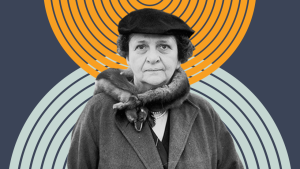
Frances Perkins’ Career and Advocacy
Frances Perkins began her career as a social worker in New York City in the early 1900s, working at settlement houses such as the Greenwich House and Hull House, where she provided aid and education to impoverished immigrants and workers.
Her defining moment came after witnessing the horrific Triangle Shirtwaist Factory fire on March 25, 1911, in which 146 garment workers, mostly young immigrant women, died due to unsafe working conditions.
Deeply moved, Perkins committed herself fully to labor reform and workplace safety.
Following the fire, she became the executive secretary of the Committee on Safety of the City of New York, where she helped lead investigations into industrial working conditions and pushed for regulatory reforms.
She collaborated with progressive politicians like Al Smith and Robert F. Wagner, who would become her allies in shaping labor policies.
In 1919, Perkins was appointed to the New York State Industrial Commission by Governor Al Smith, becoming the first woman to serve on the commission.
She rose to chair the commission in 1926, focusing on improving labor conditions, reducing working hours for women, and expanding safety laws.
When Franklin D. Roosevelt became governor of New York in 1929, he appointed Perkins as the State Industrial Commissioner, a position in which she supervised over 1,800 employees and continued her advocacy for labor rights.
She gained a reputation as a tough, effective administrator who delivered real improvements in workers’ lives during the Great Depression.
Her early advocacy not only helped shape state labor policies but also positioned her as a leading national figure in labor reform, setting the stage for her historic appointment to the federal government.
Her work throughout this period emphasized the importance of government responsibility in protecting workers, a principle that would define her later contributions to the New Deal.

Frances Perkins’ Government Service and Rise to Prominence
Frances Perkins’ national rise began when Governor Franklin D. Roosevelt appointed her as New York State’s Industrial Commissioner in 1929, where she became one of the most powerful labor officials in the country.
In that role, she expanded factory investigations, reduced the workweek for women to 48 hours, increased minimum wages, and improved workplace safety laws.
Her strong leadership, administrative skill, and deep understanding of labor issues impressed Roosevelt, laying the foundation for her next historic role.
On March 4, 1933, after Roosevelt became President, he appointed Frances Perkins as U.S. Secretary of Labor, making her the first woman ever to serve in a United States presidential cabinet.
Before accepting the position, Perkins laid out a bold agenda that included Social Security, unemployment insurance, a federal minimum wage, abolition of child labor, and a 40-hour workweek, most of which she later achieved.
As Secretary of Labor, Perkins played a central role in designing and implementing key components of the New Deal, Roosevelt’s response to the Great Depression.
She worked closely with other New Deal architects and helped shape programs like the Civilian Conservation Corps (CCC) and the Public Works Administration (PWA) to create jobs and economic relief.
Perkins’ efforts culminated in the Social Security Act of 1935, a landmark law that created the Social Security system, providing pensions for the elderly, unemployment insurance, and welfare programs.
She was also instrumental in passing the Fair Labor Standards Act of 1938, which established a national minimum wage, overtime pay, and prohibited child labor.
Her 12-year tenure (1933–1945) as Secretary of Labor, the longest in U.S. history, marked a time of transformative change in American labor policy.
Through intelligence, persistence, and deep moral conviction, Frances Perkins rose to national prominence and redefined the role of government in protecting workers’ rights and economic security.
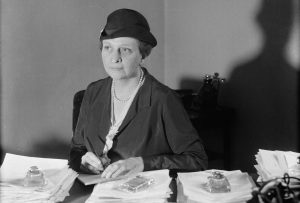
Frances Perkins, Secretary of Labor (1933–1945)
Frances Perkins served as the U.S. Secretary of Labor from March 4, 1933, to June 30, 1945, under President Franklin D. Roosevelt, becoming the first woman in U.S. history to hold a Cabinet position.
Her 12-year tenure remains the longest of any Secretary of Labor, and it was during one of the most critical eras in American history, the Great Depression and World War II.
As Secretary, Perkins was a key architect of the New Deal, playing a central role in crafting and executing Roosevelt’s sweeping economic and social reforms.
She was instrumental in the creation of the Social Security Act of 1935, which introduced old-age pensions, unemployment insurance, and aid to dependent children, the first federal welfare program in U.S. history.
This legislation became a cornerstone of American social policy and was largely shaped by her vision.
She also championed:
The Fair Labor Standards Act of 1938 established a federal minimum wage, a 40-hour workweek, overtime pay, and restrictions on child labor.
Expansion of the public employment service and improvement of working conditions nationwide.
Establishment of federal standards for workplace safety, unemployment compensation, and union rights.
Perkins helped launch major job-creation programs such as the Civilian Conservation Corps (CCC), the Works Progress Administration (WPA), and the Public Works Administration (PWA), which provided millions of jobs and improved infrastructure across the U.S.
Despite facing intense criticism from political opponents and challenges as a woman in a male-dominated Cabinet, Perkins remained steadfast.
She was often described as calm, strategic, and quietly influential, working behind the scenes to gain support for major labor reforms.
During World War II, Perkins oversaw policies that supported the wartime labor force, including the integration of women into defense industries and the protection of labor rights during wartime production.
Her legacy as Secretary of Labor is monumental; she fundamentally transformed the role of the federal government in workers’ lives, introduced enduring labor protections, and helped establish the foundation of the modern American welfare state.

Frances Perkins Post-Cabinet Years
After stepping down as Secretary of Labor on June 30, 1945, following President Franklin D. Roosevelt’s death, Frances Perkins continued her public service under President Harry S. Truman, who appointed her to the U.S. Civil Service Commission in July 1945.
In this role, she focused on ensuring merit-based hiring in federal employment and promoting fairness and efficiency in the federal workforce.
She served on the commission until 1953, when she resigned after President Dwight D. Eisenhower took office.
Following her federal service, Perkins transitioned into academia.
She became a lecturer and teacher at Cornell University’s School of Industrial and Labor Relations, where she taught students about public policy, labor history, and government administration.
Her lectures were known for blending personal anecdotes from her years in the Roosevelt administration with practical lessons on labor law and social justice.
In 1946, she published her memoir, The Roosevelt I Knew, a detailed and intimate portrayal of her working relationship with FDR and insights into the New Deal era.
The book remains an important historical account of Roosevelt’s presidency and Perkins’ role in shaping it.
Even in retirement, Perkins remained active in civic causes, frequently giving speeches and advising on labor and social welfare issues.
She continued to champion the causes of economic justice, workers’ rights, and women’s participation in public life.
Frances Perkins remained a respected and influential figure until she died in New York City on May 14, 1965, at the age of 85.
Her post-Cabinet years were marked by continued dedication to education, fairness in government, and the public good, solidifying her reputation as one of the most impactful public servants in American history.
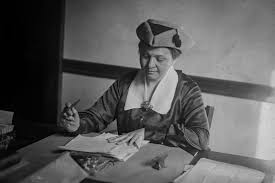
Frances Perkins’ Death and Legacy
Frances Perkins died on May 14, 1965, in New York City, at the age of 85.
She was laid to rest in Newcastle, Maine, where her family had long owned a summer home.
Her passing marked the end of a remarkable life dedicated to public service, social reform, and the protection of workers’ rights.
Perkins left behind a towering legacy as a trailblazer, visionary policymaker, and advocate for economic justice.
Her work fundamentally transformed the relationship between the American government and its citizens.
Most notably, she was the chief architect of the Social Security Act of 1935, a program that continues to provide financial security to millions of Americans.
Through her leadership as Secretary of Labor from 1933 to 1945, she helped establish unemployment insurance, child labor laws, the federal minimum wage, and the 40-hour workweek.
Her influence is still felt today:
The Frances Perkins Building, headquarters of the U.S. Department of Labor in Washington, D.C., was named in her honor in 1980.
She was posthumously inducted into the National Women’s Hall of Fame in 1982.
Numerous scholarships, academic centers, and labor studies programs across the U.S. bear her name.
Her contributions are recognized in American history as essential to the development of the New Deal, the welfare state, and modern labor rights.
Frances Perkins’ legacy is not just about the policies she shaped but the barriers she broke.
As the first woman in a U.S. presidential Cabinet, she paved the way for future generations of women in government.
More than six decades after her tenure, she remains a symbol of integrity, perseverance, and service to the common good, inspiring leaders and reformers across the world.
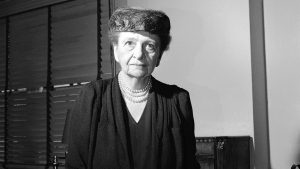
Facts and Trivia About Frances Perkins
1. First Woman in the U.S. Cabinet: Frances Perkins was the first woman ever appointed to a U.S. presidential cabinet when President Franklin D. Roosevelt named her Secretary of Labor in 1933.
2. Longest-Serving Secretary of Labor: She served from March 4, 1933, to June 30, 1945, making her the longest-serving Secretary of Labor in U.S. history, 12 years across FDR’s four terms.
3. Witnessed the Triangle Shirtwaist Fire: Perkins personally witnessed the Triangle Shirtwaist Factory fire in 1911, a tragic event that deeply influenced her lifelong fight for workplace safety and labor reforms.
4. Architect of Social Security: She was the chief architect behind the Social Security Act of 1935, which remains a cornerstone of the American social safety net.
5. Refused the Job Without a Deal: Before accepting the Secretary of Labor role, Perkins gave Roosevelt a list of conditions, including minimum wage laws, unemployment insurance, and abolition of child labor—she accepted the job only after he agreed.
6. Wore a Signature Tricorn Hat: Known for her practical fashion sense, she was often seen wearing her iconic tricorn hat, which became her public trademark.
7. Kept Her Maiden Name: At a time when it was rare, she retained her maiden name after marriage, continuing her public and professional life as “Frances Perkins.”
8. Faced Impeachment Threat: She was nearly impeached in 1939 over her refusal to deport labor leader Harry Bridges without due legal process. The effort failed, and she remained in office.
9. A Devout Episcopalian: Perkins was guided by deep Christian faith and values from the Social Gospel Movement, which emphasized using religion to address social justice.
10. Academic Career at Cornell: After leaving government service, she became a lecturer at Cornell University, teaching at the School of Industrial and Labor Relations.
11. Posthumous Honors The U.S. Department of Labor headquarters in Washington, D.C., was named the Frances Perkins Building in her honor in 1980.
Inducted into the National Women’s Hall of Fame in 1982.
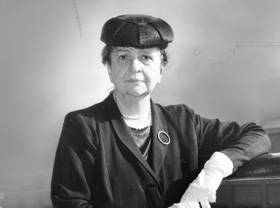
Controversy Surrounding Frances Perkins
While Frances Perkins is widely celebrated for her groundbreaking achievements and public service, her career was not without controversy, especially given her role as the first woman in the U.S. Cabinet during a turbulent political era.
Much of the criticism she faced stemmed from gender bias, political opposition, and her immense power in shaping transformative policies.
1. Gender-Based Criticism: As the first female Cabinet member, Perkins faced significant skepticism and resistance from male colleagues, labor leaders, and members of the press.
Many questioned her qualifications solely based on her gender, and she was often unfairly scrutinized in ways her male counterparts were not.
Despite her expertise, she had to constantly prove her competence and often operated in the background to avoid fueling further controversy.
2. Harry Bridges Deportation Case (1939–1945): One of the most intense controversies of her tenure was the Harry Bridges case.
Bridges was a prominent West Coast labor leader and head of the International Longshore and Warehouse Union (ILWU).
He was accused of being a communist, a charge that, if true, would have made him eligible for deportation under U.S. law.
As Secretary of Labor, Perkins had authority over immigration and deportation proceedings.
She refused to authorize his deportation without sufficient legal evidence, which led to accusations that she was soft on communism and even sympathetic to leftist causes.
A House committee launched an impeachment effort against her in 1939, but it ultimately failed.
The case placed her under intense political pressure and public scrutiny, though she defended her actions as consistent with due process and the rule of law.
3. Tension with Labor Unions: Although Perkins was a staunch advocate for workers’ rights, she was not always fully aligned with organized labor leaders.
Some unions criticized her for not doing enough to promote union power or for being too pragmatic and cautious in her policymaking.
Her willingness to compromise to pass labor legislation sometimes drew criticism from more radical labor factions.
4. Immigration and Japanese Internment: As Secretary of Labor, Perkins oversaw the Immigration and Naturalization Service (INS) until it was transferred to the Department of Justice in 1940.
During World War II, she had limited influence over immigration policy and was not directly involved in the Japanese American internment, but her perceived silence on the issue led some later critics to question her commitment to broader civil liberties during wartime.
In Summary
Frances Perkins’ controversies were largely shaped by the political climate of the 1930s and 1940s, and many stemmed from the groundbreaking nature of her role, the progressive reforms she championed, and the resistance to change within the political system.
Though these controversies challenged her reputation at times, none succeeded in undermining her legacy as one of the most influential and principled public servants in American history.
FAQs
1. Who was Frances Perkins?
Frances Perkins was an American social reformer and political leader best known as the first woman to serve in a U.S. presidential cabinet, holding the position of Secretary of Labor from 1933 to 1945 under President Franklin D. Roosevelt. She was a key architect of New Deal reforms, including Social Security and labor protections.
2. When and where was Frances Perkins born, and when did she die?
She was born on April 10, 1880, in Boston, Massachusetts, and died on May 14, 1965, at the age of 85.
3. What was Frances Perkins’ major contribution as Secretary of Labor?
She established the Social Security Act of 1935, helped implement the Fair Labor Standards Act, introduced minimum wage laws, unemployment insurance, child labor restrictions, and 40-hour workweeks.
4. Why is Frances Perkins a historical figure in U.S. politics?
She broke gender barriers by being the first female cabinet member and was instrumental in shaping many New Deal policies that define the U.S. labor system today.
5. What was her educational background?
Frances graduated from Mount Holyoke College in 1902 and earned a Master’s degree in Sociology from Columbia University in 1910.
6. Did Frances Perkins face challenges as a woman in politics?
Yes. As a pioneering woman in a male-dominated field, she faced gender bias, criticism, and political resistance, especially from conservative lawmakers and opponents of the New Deal.
7. Was Frances Perkins married?
Yes, she married Paul Caldwell Wilson in 1913, though the marriage was strained due to Wilson’s mental illness. They had one daughter, Susanna Wilson.
8. What was her role during the Triangle Shirtwaist Factory fire?
She witnessed the 1911 fire firsthand, which deeply impacted her. The tragedy spurred her lifelong advocacy for workplace safety, fire codes, and labor rights.
9. What did Frances Perkins do after leaving the Cabinet?
After 1945, she taught at Cornell University and wrote a memoir titled The Roosevelt I Knew, reflecting on her experiences with FDR and public service.
10. How is Frances Perkins remembered today?
She is honored as a trailblazer for women in politics, a pioneer of social welfare in America, and a symbol of labor justice. The U.S. Department of Labor headquarters in Washington, D.C., is named The Frances Perkins Building.
In Conclusion
Frances Perkins was not just the first woman to serve in a U.S. presidential cabinet; she was a visionary leader whose legacy shaped the very foundations of modern American labor laws and social welfare.
Through her work as Secretary of Labor under President Franklin D. Roosevelt, she introduced critical reforms, including Social Security, minimum wage, unemployment insurance, and workplace safety laws, many of which still protect American workers today.
Her life was driven by compassion, resilience, and a firm belief in justice for all, especially the working class.
As a woman who broke through the highest levels of government during a time of deep gender discrimination, Frances Perkins remains a powerful symbol of progress, courage, and change.
Her legacy endures, not just in laws but in every worker who benefits from fair wages, safe workplaces, and social protection.
Discover more from Labaran Yau
Subscribe to get the latest posts sent to your email.
